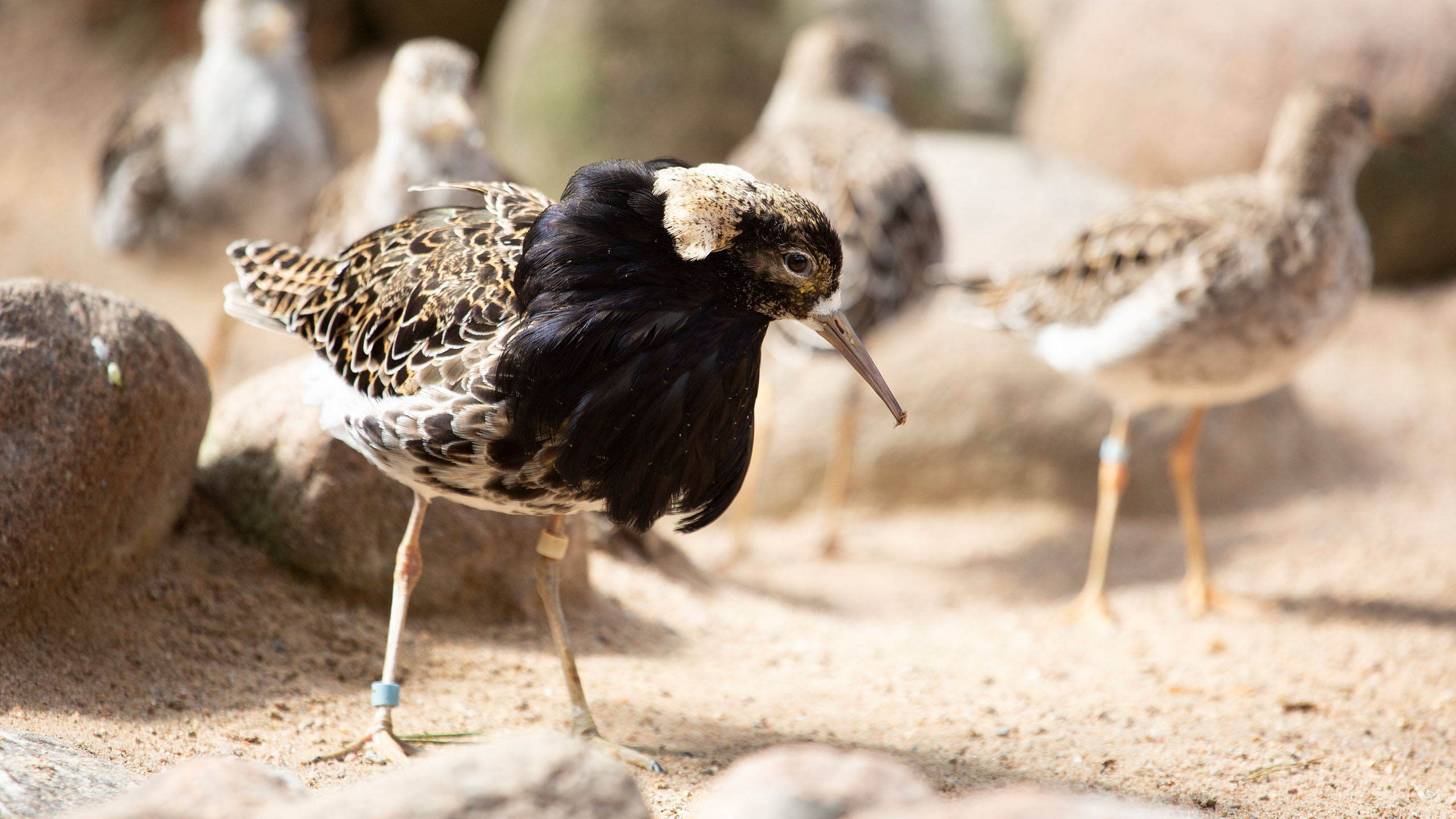
Ruff
Calidris pugnax
Ruffs and other waders live in wetlands. Their thin, long beak helps them pick up small invertebrates to eat. Waders wade using their tall, featherless legs and nest in the ground. They typically lay four eggs in the nest. Waders are among the first birds to migrate to the warm south and they make their move already at the end of the summer.
In April and May the ruffs have their courtship display, where dancing, fencing and bluffing takes place. The display of ruffs is almost silent. The males do not sing or call, but instead express their enthusiasm with feathers and dance choreography.
In the springtime the male ruff grows a big and colourful feather ruff around its neck. That’s where their name comes from. But not all of the males have ruffs. Three different kinds of males differ from one another by their plumage and behavior. Males with certain coloured ruffs always play the same role during display. The colour and therefore also the behavior are inherited and remain the same throughout the bird’s life. Both male and female ruffs have brown plumage outside the breeding season.
The males with coloured ruff defend their small territories within the display arena. The ruff colour differs from black to brown or it may also be spotted or striped. The arena is divided into territories about the size of one square meter. The territorial males battle over the territories by display dance and fencing with their sword-like beaks. Territorial males may mate with females entering its territory.
Ruff’s roles on display
The males with dark ruff defend their small territories within the display arena. The ruff colour differs from black to brown or it may also be spotted or striped. The arena is divided into territories about the size of one square meter. The territorial males battle over the territories by display dance and fencing with their sword-like beaks. Territorial males may mate with females entering its territory.
Males with white ruff are called satellite males. They do not have their own territories and they may move about freely. Other males don’t drive the satellite males away, because large number of males attracts more females to the area. Satellite males mate with females, when the territorial males are distracted.
The mimicking males resemble females also during the breeding season. Less than 1% of the males are female mimics that never grow feather ruffs. Instead their testes are twice the size of other males. The mimics bluff everyone else and mingle among females to mate with them. The other males don’t chase away the mimic, but try mating with it.
The more males and action there are at the arena, the more females are attracted to it. Females may enter the territories of their choice for mating with territorial males. Over half of the females have chicks fathered by at least two different males in one brood. The female incubates the eggs and takes care of the chicks alone without male assistance.
Borealia house
Endangerment

Endangerment in Finland

Distribution
Habitat
Diet
Scientific classification
Order: Charadriiformes)
Family: Scolopacidae